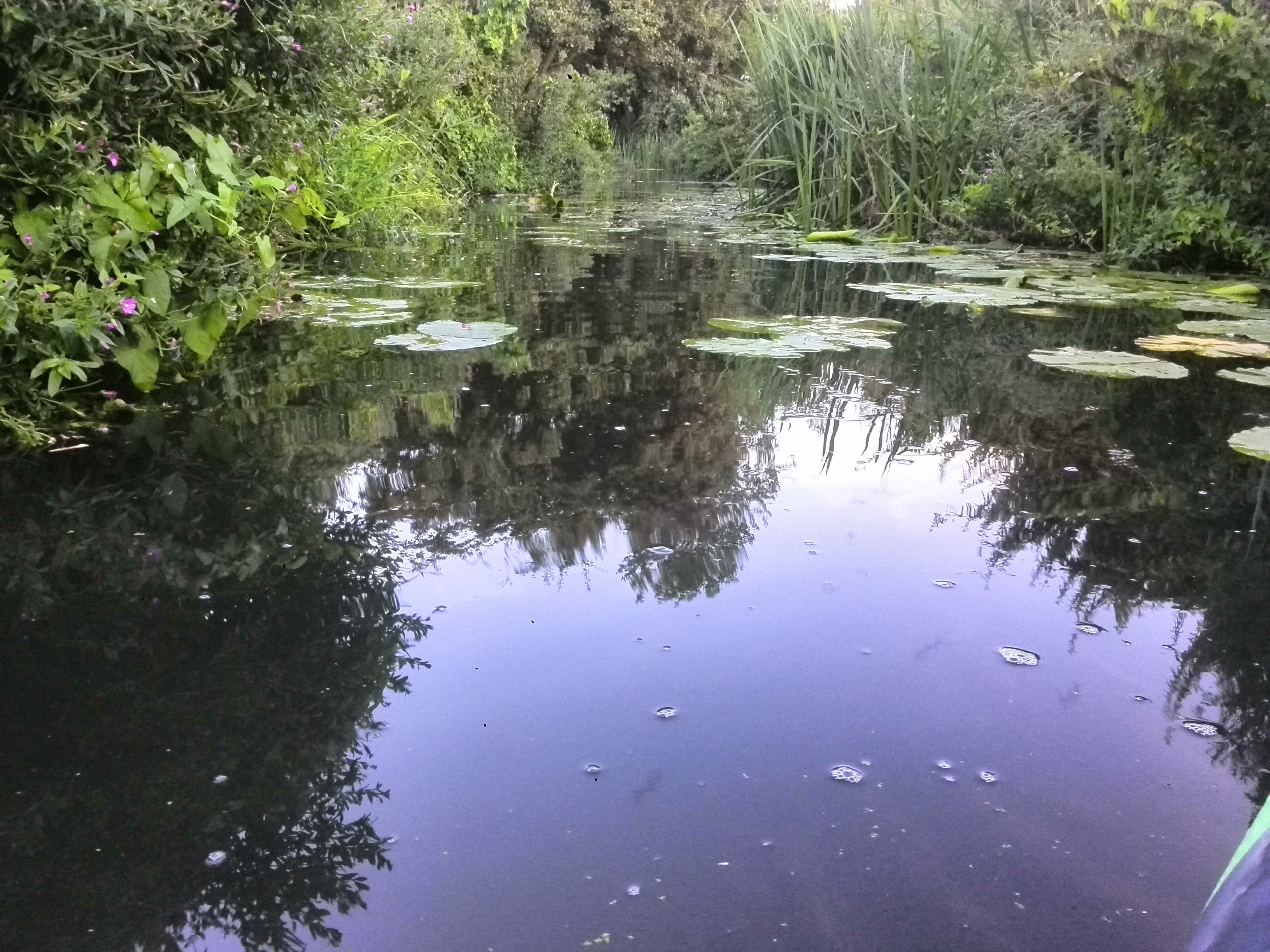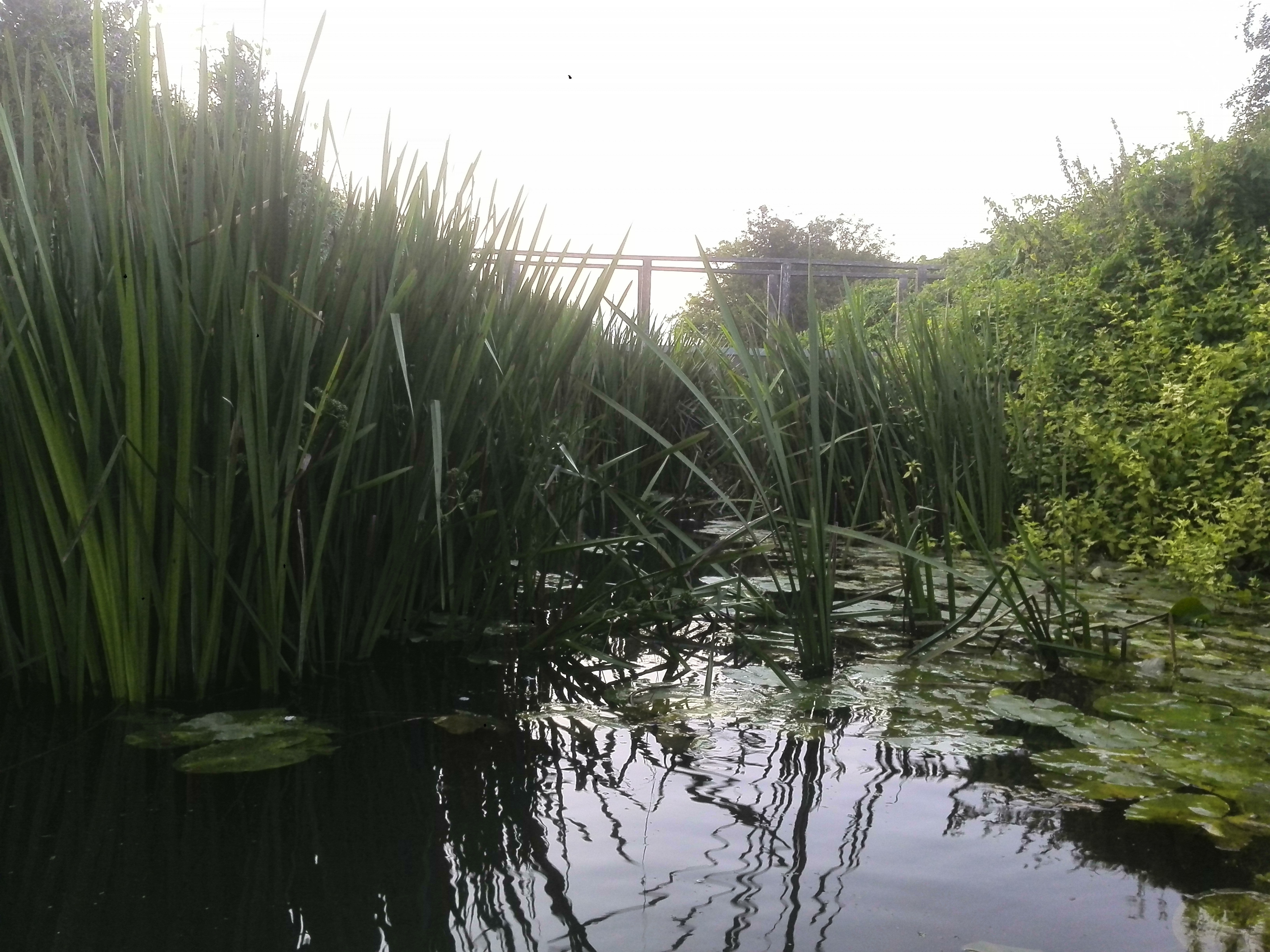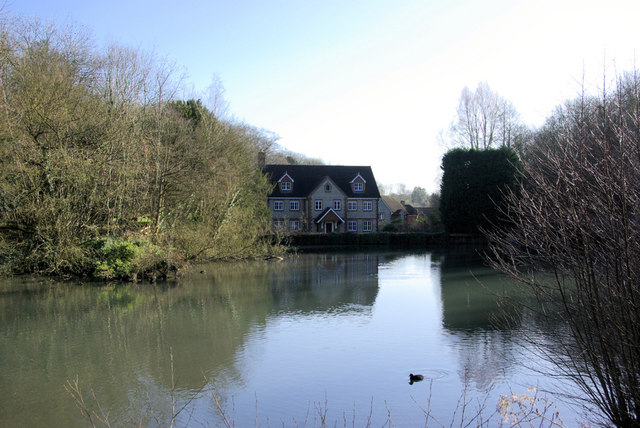Goldhill Cottages
/ref>
Pierce Mill, Golden Green
TQ 646 484
approx
Little is known of this mill, but it is commemorated today by Pierce Mill Lane. The mill was named after the millers, the Pierce family.
Little Mill, East PeckhamTQ 657 482

 This mill still stands, part of the building now being house converted, part demolished. The waterwheel was breastshot.
This mill still stands, part of the building now being house converted, part demolished. The waterwheel was breastshot.[
]
Tributaries
A tributary of the Bourne rises in the Hildenborough
Hildenborough is a village and rural parish in the borough of Tonbridge and Malling in Kent, England. It is located 2 miles (3.2 km) north-west of Tonbridge and 5 miles (8 km) south-east of Sevenoaks. The village lies in the River Med ...
parish and flows through Shipbourne
Shipbourne ( ) is a village and civil parish situated between the towns of Sevenoaks and Tonbridge, in the borough of Tonbridge and Malling in the English county of Kent. In 2020 it was named as the most expensive village in Kent.
It is located i ...
where it powered a watermill, Uridge's Mill, Shipbourne (corn) and a pump at Claygate before flowing into the Bourne downstream of Hamptons Paper Mill.
A tributary of this tributary drove a water powered sawmill at Fairlawne Home Farm, Shipbourne.
A tributary enters the Bourne at Basted Paper Mills. It may have powered a watermill in Crouch (Platt parish).
Mills on the tributaries
Uridge's Mill, Shipbourne
This mill was named after the miller, Robert Uridge, who worked the mill for sixteen years during the 1870s and 1880s. The exact location is not known. The mill may have gone by the name Puttenden Mill, but this could also have been Hamptons Paper Mill.[Kent & Sussex Courier, 20 February 1981, p2.]
Claygate pump, Shipbourne
TQ 605 517
approx
This was a breast shot wheel driving a pump again the exact location is not known.[MillArchive.com]
Fairlawne Saw Mill, Plaxtol
An estate saw mill, driven by a breast shot mill was located at Fairlawne Home Farm.[
]
Crouch Mill, Platt
There may have been a watermill at Salmons Farm, Crouch. The only reference to it being the Wrotham Tithe Award of 1845 noting a hop garden of and 35 perches "adjoining mill."[
]
Wildlife
Chubb can be seen in the river at Little Mill, and Crayfish
Crayfish are freshwater crustaceans belonging to the clade Astacidea, which also contains lobsters. In some locations, they are also known as crawfish, craydids, crawdaddies, crawdads, freshwater lobsters, mountain lobsters, rock lobsters, mu ...
can be found at Ightham. Brown trout
The brown trout (''Salmo trutta'') is a European species of salmonid fish that has been widely introduced into suitable environments globally. It includes purely freshwater populations, referred to as the riverine ecotype, ''Salmo trutta'' morph ...
can be seen at Goldhill Mill, Golden Green.[Crayfish Traps]
/ref>
Navigation

 The Bourne was navigable from The Medway, by canoe, summer 2014, in open water, for 200 m until clogged by vegetation under the 1st footpath bridge; 500 m before the 'Man of Kent' pub, East Peckham.
The river was reported navigable to the pub in winter (2012); 'the last 100 yards rocky and difficult'.
The Bourne was navigable from The Medway, by canoe, summer 2014, in open water, for 200 m until clogged by vegetation under the 1st footpath bridge; 500 m before the 'Man of Kent' pub, East Peckham.
The river was reported navigable to the pub in winter (2012); 'the last 100 yards rocky and difficult'.[songofthepaddle.co.uk]
/ref>
The lack of mills for the 800 m below Little Mill (now 'Man of Kent') may indicate that loads could once be carried to the Tonbridge Road at East Peckham. A large tannery, using the Bourne's water at Little Mill, is shown in the 1891 OS map. The river by the tannery, before the road bridge, is shown with a cut-out suited to mooring.
Footpaths
The River Bourne is crossed by the Greensand Way
The Greensand Way is a long-distance path of in southeast England, from Haslemere in Surrey to Hamstreet in Kent. It follows the Greensand Ridge along the Surrey Hills and Chart Hills. The route is mostly rural, passing through woods, and al ...
long-distance path at Dunk's Green and the Wealdway
The Wealdway, Kent and East Sussex, is a public footpath that runs for 83 miles / 134 km from Gravesend, Kent on the Thames estuary, to the A259 at Eastbourne, 3 km north of Beachy Head.The Wealdway 80 miles long distance footpath, 1981, pu ...
long-distance path at Barnes Street
Barnes Street is located on the River Medway to the east of Tonbridge in Kent, England. It is part of the hamlet of Golden Green and in the civil parish of Hadlow
Hadlow is a village in the borough of Tonbridge and Malling in Kent, England ...
. The Medway Valley Walk
The Medway Valley Walk follows the River Medway from Rochester, Kent, Rochester to Tonbridge. Above Allington, Kent, Allington, it follows the bank of the Medway Navigation. It starts on the Saxon Shore Way at Rochester. The North Downs Way cr ...
at Waggon Bridge, East Peckham
East Peckham is a village and civil parish in Kent, England on the River Medway. The parish covers the main village as well as Hale Street and Beltring.
History
The Domesday entry for East and West Peckham reads:-
:'' The Archbishop himself ...
marks the spot where the Bourne enters the Medway. Hadlow Parish Council have plotted a walk along the Bourne, from Ightham
Ightham ( ) is a village in Kent, England, located approximately four miles east of Sevenoaks and six miles north of Tonbridge. The parish includes the hamlet of Ivy Hatch.
Ightham is famous for the nearby medieval manor of Ightham Mote ( Natio ...
to the Medway.
The Ancient track, Pilgrims' Way
The Pilgrims' Way (also Pilgrim's Way or Pilgrims Way) is the historical route supposedly taken by pilgrims from Winchester, Hampshire, Winchester in Hampshire, England, to the shrine of Thomas Becket at Canterbury in Kent. This name, of compa ...
passes through Yaldham. The Roman military route from Maidstone to London crosses the Bourne at Ightham.[
]
References
See also
* Medway watermills
The Medway and its tributaries and sub-tributaries have been used for over 1,150 years as a source of power. There are over two hundred sites where the use of water power is known.
These uses included corn milling, fulling, paper making, iron sm ...
article
{{DEFAULTSORT:Bourne, River
Rivers of Kent
Tonbridge and Malling
Watermills in Kent
1Bourne
 This
This  This paper mill was built in 1740 by Thomas West, carpenter, of
This paper mill was built in 1740 by Thomas West, carpenter, of 
 This mill still stands, part of the building now being house converted, part demolished. The waterwheel was breastshot.
This mill still stands, part of the building now being house converted, part demolished. The waterwheel was breastshot.

 The Bourne was navigable from The Medway, by canoe, summer 2014, in open water, for 200 m until clogged by vegetation under the 1st footpath bridge; 500 m before the 'Man of Kent' pub, East Peckham.
The river was reported navigable to the pub in winter (2012); 'the last 100 yards rocky and difficult'.songofthepaddle.co.uk
The Bourne was navigable from The Medway, by canoe, summer 2014, in open water, for 200 m until clogged by vegetation under the 1st footpath bridge; 500 m before the 'Man of Kent' pub, East Peckham.
The river was reported navigable to the pub in winter (2012); 'the last 100 yards rocky and difficult'.songofthepaddle.co.uk